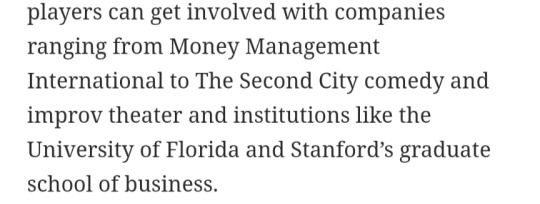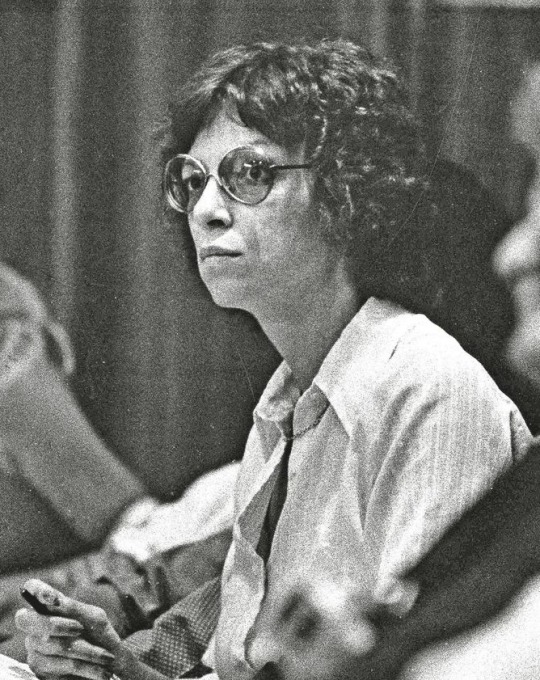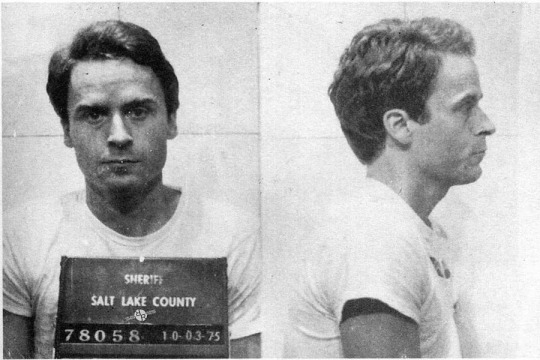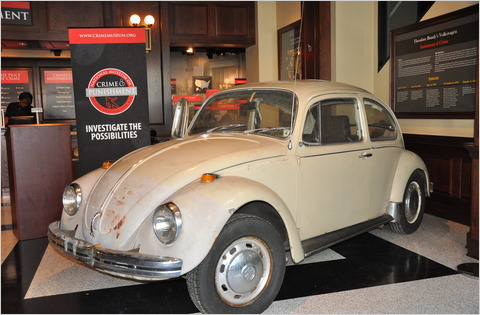#certification construction in philadelphia
Explore tagged Tumblr posts
Text
Construction technicians can thrive in the 2025 job market with a blend of education and specialized training.
#construction college in philadelphia#apprenticeship for construction in philadelphia#certification construction in philadelphia#best construction institute in philadelphia#construction trade schools degree in philadelphia#construction courses in philadelphia#construction training programs in Mantua#construction certification classes in philadelphia#construction training programs in philadelphia
0 notes
Text
How Does Construction Training Benefit High Schoolers?
Construction training plays an essential role in the economic growth of high schoolers. Dive in to learn the importance of construction training programs.
#construction training in Cinnaminson NJ#construction program in Cinnaminson NJ#construction training programs in Cinnaminson NJ#trade schools for construction in Cinnaminson NJ#construction course in Cinnaminson NJ#masonry classes in Cinnaminson NJ#construction certification institute in philadelphia#construction school in philadelphia#construction programs in philadelphia#construction tech institute in philadelphia
0 notes
Text
NHLPA launches a new program to help players prepare for life outside of hockey
i.e. dad yelling at u to get a real job bc ur etsy shop aint be bumpin forever

the kids are getting a high school guidance counsellor and co-op term! what colour is ur parachute nursey

no wonder sabres on the rise oko's media hits so beautifully eloquent. they got smartypants mini gm at the helm

i just find this so interesting and wonderful ...and like if a big hockey butt wants to come hit me up for improv classes i'm not complaining🫠 imma make a union actor (nate. realistic) two time emmy winner (sid. dream on u don't have that ass) outta u
full article under cut:
Early in his time in the NHL, Darnell Nurse says he did not notice a lot of players talking about what to do after hockey. Going into his ninth season, the chatter is now normal.
“People are curious as to what there is outside the game and what you can do to prepare yourself,” Nurse said.
Plenty of players have taken it upon themselves to prepare for the future, like Zdeno Chara getting his real estate license and others finishing college degrees or exploring business opportunities. The NHL Players’ Association on Thursday launched a program that gives its members the chance to do a personality analysis and delve into real estate, business or other avenues while still in the league.
The hope is to help them develop interests outside of hockey while playing and ease the transition to life afterward.
“It’s something that’s been missing a little bit,” veteran center Lars Eller told The Associated Press. “It’s kind of well known that one of the struggles for a professional athlete is the transition on to the next thing once he’s done with his professional career. And this platform helps you with that transition, and it’s something you can start even while you’re still playing so you can sort of hit the ground running once you’re done.”
New union boss Marty Walsh made helping former players one of his top priorities. His arrival in March coincided with a process two years in the making, after player feedback indicated the desire for more assistance outside of hockey.
The result is the NHLPA UNLMT program. Retired defenseman-turned-psychologist Jay Harrison is available to do an assessment, and players can get involved with companies ranging from Money Management International to The Second City comedy and improv theater and institutions like the University of Florida and Stanford’s graduate school of business.
Former goaltender Rob Zepp, who’s spearheading the program as the union’s director of strategic initiatives, said an extensive survey provided the building blocks for something that was designed to be 1-on-1 and customized for players to figure out what might interest them.
“What we’ve seen so far it really runs the gamut: anything from enhancing one’s personal brand to starting a podcast to taking these certificate-level courses in real estate, in entrepreneurship, in business, in leadership, communication skills, networking skills,” Zepp said. “We have players that are interested in or are currently pursuing commercial real estate avenues or farming ventures or construction.”
Eller, Nurse and Buffalo captain Kyle Okposo are among the players who have tried UNLMT so far. Okposo has already graduated from Stanford’s business leadership program, while Eller has spoken with Harrison and taken some of the courses offered.
“They’re not waiting until people’s careers are over,” said Nurse, who is still in his prime at 28. “It’s something that you can dip your feet into and grab a hold of while you’re still playing and giving you resources and opportunities to kind of figure out what you want to do.”
Zepp got a degree from the University of Waterloo and an MBA from the University of Liverpool the old-school way — tapes and textbooks sent by mail and tests taken in front of a proctor — while playing mostly in the minors and Europe before before 10 games with Philadelphia in 2014-15. He felt like having something to study made him a better goalie and understood there was plenty of idle time on the road.
Eller, who is a silent partner involved with helping start-up businesses, thinks the same way.
“We, as players, we have — not a lot of freedom once the season is starting — but we do have a lot of free time,” said Eller, who scored the Stanley Cup-winning goal for Washington in 2018 and is a pending free agent at 34. “It’s a huge positive if you have something else that you can take your mind off of hockey and do something productive with that time.”
Walsh got to know several Bruins alumni when he was mayor of Boston and has since talked to other former players and come away with a mandate to protect guys beyond their time on the ice.
“When they played, they gave it their all, and a lot of them didn’t really have anything after that,” Walsh said. “They didn’t make big contracts. They really didn’t have a strong pension system. A lot of them, even going back further than that, lost stuff. We can’t let that happen again.”
#nhlpa#kyle okposo#darnell nurse#lars eller#edmonton oilers#colorado avalanche#buffalo sabres#zdeno chara#boston bruins#marty walsh#annieQ hockey thoughts
124 notes
·
View notes
Text

Does Ben Gates have Ph.D?
It depends who you ask.
The textual evidence in the first National Treasure movie suggests no. (Or at least doesn’t present direct evidence for yes.)
As we discussed in the Navy article, the first film lists Ben’s education as follows:
degree in American history from Georgetown
degree in mechanical engineering at MIT
Navy ROTC, Naval Diving and Salvage Training Center
Like I argue there, my instinctual reaction is that the degrees are read in order of acquisition. That’s just the most common way to read them, especially when you’re constructing the history of a person, be that on a resume or an FBI profile.
That would suggest that American history a bachelor’s degree and mechanical engineering is a masters.
But wait there's more! Text, drafts, titles, and headcanons below!
As I point out:
There’s also the difference between a bachelor’s and masters’ degree to consider. The higher you get in higher ed, the more specific you get. A bachelor’s in American history would give Ben the greatest breadth of study, and the freedom to explore any and all topics he was interested in. A masters’ degree in the same field would ask him to zero in on a topic, perhaps more than he’d want to. Likewise, I think that depth over breadth would benefit him in his engineering degree. That way he could focus in on the areas most relevant to him and treasure hunting.
It’s also plausible to read this list in reverse order. That would suggest Ben got a bachelor’s degree in mechanical engineering (perhaps in an attempt to get Patrick off his back by making it appear he was not directly pursuing treasure hunting?) and then master’s or doctorate in American history.
While this is completely possible, I don’t consider it as likely based on the way it’s presented in the movie. The inclusion of the Navy stuff last makes it sound like Ben is progressively narrowing his field of study as he hones in on his Charlotte-was-a-ship theory. He starts with a broad foundation in American history, then proceeds on to the more specialized technical skills once he realizes the ship is lost/sunk and he’ll need them.
I also think it squares with Ben’s personality and interests. I just
don’t see Ben putting off the history degree. It’s his real passion, and there’s always the risk that he wouldn’t get to go back for a second degree for any number of reasons.
That said, the 2003 script does make it clear that in that version Ben does have a Ph.D in history.
When the treasure hunt seems to be at a Declaration of Independence-induced halt early on, Ian says
IAN You have your PhD in History. Maybe you can teach high school history.
The National Treasure Wiki lists Ben’s education history as:
Ben went on to receive a Bachelors degree in archeology and cryptology at the University of Philadelphia, a Masters degree in mechanical engineering degree from MIT and a Doctorate in American History from Georgetown University. While in Georgetown, Ben also enlisted in the US Navy Reserve Officer Training Corps for the next four years and received official certification from their Naval Diving and Salvage Training Center before continuing the six generation family tradition of treasure hunting.
But I don’t see a source for this, so take it as you will.
Ben having a degree in archeology and cryptology seems important for the FBI to mention in their profile of him. Also if he went to the University of Philadelphia that seems relevant to the Philadelphia foot chase? But it’s Ian and crew who seem to be familiar with the streets. Ben doesn’t try to lead them anywhere tricky or clever that would suggest he’s familiar with the area. Even Abigail and Riley go to the more Philadelphia-specific location of Reading Terminal Market than Ben, who seems to be running toward any random place he might be able to hide or escape.
Titles
There’s also the matter of how he’s addressed.
In the first film, the only time anyone calls Ben by a title is when he’s being arresting him in Philadelphia.
SADUSKY Hello, Mr Gates. AGENT JOHNSON Mr Gates, face your father's car and put your hands behind your back, please.
The rest of the time he’s simply “Ben” to his friends and “Gates” to his enemies.
Now, not everyone with a Ph.D uses the title ��Dr.” Not using it would fit with Ben’s personality as both a pretty humble person (he doesn’t flaunt his other degrees either) and someone on the outs with the academic community. More on that later.
However, I don’t know that that’s the case based on how other people are titled in the film.
Abigail is always “Dr. Chase.”
Her assistant, Ben, Agent Johnson, and Ian all refer to her as “Dr. Chase” at various points throughout the movie.
Ben obviously starts calling her “Abigail” as they get to know each other better, but even when he’s listing his requests to Sadusky at the end, he refers to her by title. And damn right. Respect her.
Maybe Abigail simply uses the title—as a result of her job, personal preference, or both—and Ben doesn’t. It does seem like the kind of thing that would come up both to her and in general to establish Ben’s credibility though.
There’s also the potential to ready Sadusky’s line as knowing Ben has a Ph.D but choosing to be disrespectful. As in:
SADUSKY Hello. Mr. Gates (derogatory)
This, I think, is the least likely option, though, because Peter Sadusky is unfailingly polite, even regarding the people he’s pursuing.
For example, he also always calls Ian "Mr. Howe." In the surveillance van near the Intrepid he says
SADUSKY If that's not Mr Howe, I want to know who it is.
And when he’s arresting Ian in Boston he says
SADUSKY You're under arrest, Mr Howe.
So my reading is that Sadusky always uses someone appropriate title. If he knows Ben has a Ph.D, I think he’d refer to him as “Dr. Gates” because he has no reason to know if Ben prefers not to use the title.
Book of Secrets
There is one time where Ben is referred to as “Dr.” on screen, and that’s in Book of Secrets.
When Abigail meets Mitch at the restaurant, she receives a call from Ben, finishes decoding the “Laboulaye Lady” clue, and hangs up because she can tell Mitch is overhearing. Regarding the call, Mitch then asks
MITCH Dr. Gates?
There are four possible readings of this line that I can think of.
Ben does have a Ph.D, it just wasn’t mentioned in the first movie for whatever reason
Ben does not have a Ph.D, but Mitch incorrectly assumes he does
Ben does not have a Ph.D, but Mitch is attempting to flatter Abigail by flattering her (ex) boyfriend*
*Is this a good strategy? No. Do I find it a plausible character action? Sure.
And finally there’s my preferred reading
Ben did not have a Ph.D during the events of National Treasure, but was awarded an honorary doctorate after finding the Templar treasure.
Why does he need one?
Ben is clearly piecing together a custom-built treasure hunting resume. It’s logical to me why he would want to start out studying history then pivot to more specific technical and engineering disciplines once he realized he would need those skills. I’m not sold on why he would go back for his doctorate.
A Ph.D is an incredibly specialized degree. Ben would be spending years writing a thesis on a single topic.
If that topic is the Templar treasure, Ben would have a nearly impossible time defending his thesis. We know that his surname alone is well-known enough in the historical community that Abigail knows about his family’s reputation just from hearing his name. Ben would be subjecting himself to years of derision, skepticism, and humiliation on a thesis he is not able to defend because we know he has yet to convince anyone but Ian and Riley of the existence of the treasure.
Or the topic is not the Templar treasure, in which case, what is he doing there? He’s spending years of his life studying a thing that he does not want to be studying. Maybe he thinks he can do his treasure hunting on the side, but graduate school is a black hole like no other.*
There’s the classes, papers, research, readings, not to mention that he’d probably be expected to teach as well. He’d might also need a part-time job to make ends meet, because while most Ph.D programs provide a stipend, it’s usually barely enough to live on and definitely not enough to fund treasure hunting on the side. Given the way Patrick frames the family's finances, I don't get the impression that Ben's big on saving up.
*I have a less intensive graduate degree in a less intensive field, and I could barely keep my head above water doing the literal thing I was there to do. I cannot fathom attempting to run another massive project on the side.
That’s not to say, however, that Ben didn’t attend a Ph.D program at some point though.
Headcanon time
First of all, I think the story is funnier the more Ben is just “some guy.”
Similar to how I think that “retired Naval officer Ben Gates” changes the flavor of the story for the worse, I think “rogue historian Ben Gates” changes the flavor, if not for the worse than simply for the less interesting.
My personal reading of the situation is this:
Ben gets his bachelor’s in American history, develops his Charlotte-is-as-ship theory while in school, then proceeds directly into the engineering degree + Navy ROTC because he’s discovered that the Charlotte wrecked and knows he’ll need to salvage her. (When he goes to MIT Patrick’s like, thank god he’s finally doing something sensible. When he learns Ben’s doing salvage diving he’s like, well fuck.)
After school Ben salvage dives to pay the bills, and treasure hunts in his spare time. At some point either the money or his free time takes enough of a hit that Ben needs to make a change. Thus, he starts applying to Ph.D programs. And/or he needs particular resources or expertise at this point and additional study is the best way to get them.
He stays in the program for a few years, but not being able to truly pursue the treasure grates on him. Constantly being told—directly or not—that you’re stupid for what you’re interested in or for the way you want to pursue the subject absolutely sucks. (See also: my time in academia.) The derision and the strain on his treasure hunting time ware down on him until the program isn’t worth it anymore. He got what he came for, so he leaves. Ben briefly wonders if finishing with a non-treasure thesis would finally make Patrick proud of him, but decides against it.
It’s during these next years that he refines his theory, discovers critical information needed to realize that the Charlotte never actually sunk, but went adrift in the Arctic circle, recruits Ian to finance the search now that he as a tangible plan, and pulls in Riley to do the computer modeling that Ben can’t do on his own.
After he finds the treasure, his undergraduate alma matter Georgetown awards Ben an honorary doctorate. Patrick, Abigail, and Riley attend the ceremony. They’re all very proud. Ben gets unexpectedly emotional, at least on the inside. He hadn’t realized before that moment that this actually was something he wanted, and that he’d actually felt pretty torn between academic study—which he does excel at and enjoy—and treasure hunting.
Conclusion
So, there you go.
Does Ben have a Ph.D?
Only if you want him to.
#national treasure#the national treasure gazette#ben gates#abigail chase#riley poole#peter sadusky#ian howe#articles
24 notes
·
View notes
Text
Open Your Future: A Complete Guide to CNA Certification in Philadelphia
Unlock Your Future: A complete Guide to CNA certification in Philadelphia
Do you aspire to work in the healthcare field but are unsure where to start? Becoming a Certified Nursing Assistant (CNA) might be just the career path you’re looking for! This extensive guide will walk you through the process of obtaining your CNA certification in Philadelphia. We will explore the steps involved,the benefits of becoming a CNA,and practical tips to succeed in your nursing journey.
What is a CNA?
A Certified Nursing Assistant (CNA) plays a vital role in patient care. They assist nurses and provide basic care to patients, facilitating daily activities and ensuring comfort. Their tasks may include:
Bathing and dressing patients
monitoring vital signs
Assisting with mobility
Feeding patients
Helping patients with basic necessities
CNAs are essential in hospitals, nursing homes, and home health care settings, making it a rewarding career with significant growth potential.
Steps to Obtain Your CNA Certification in Philadelphia
1. Research CNA Programs
The first step in your certification journey is to locate a state-approved CNA training program. Philadelphia offers various options, including community colleges and vocational schools. Make sure that the program meets the Pennsylvania Department of Health requirements.
2. Complete the Training Program
Typical CNA training programs require 120 hours of coursework, which includes both classroom instruction and practical experience. Topics covered generally include:
Patient care procedures
Safety and infection control
Interaction skills
Basic anatomy and physiology
3. Pass the CNA Exam
Upon completing your training, you must pass the CNA certification exam. The exam consists of two parts:
The Written Test: A multiple-choice test assessing your knowledge of nursing skills and ethics.
the Skills Test: A practical examination where you demonstrate key nursing skills in a controlled environment.
4. Apply for State Certification
After passing the exam, submit your submission to the Pennsylvania Department of Health along with the required fee. Once processed, you will receive your certification, allowing you to work as a CNA in Philadelphia.
Benefits of Becoming a CNA
Choosing a career as a Certified Nursing Assistant comes with numerous advantages:
Job Security: The demand for healthcare professionals continues to rise, ensuring stable employment opportunities.
Flexible Schedules: Many healthcare facilities offer various shifts, allowing you to balance work and personal life effectively.
Possibility for Advancement: Becoming a CNA opens doors to further education and specialization in nursing.
Fulfillment: Helping patients improve their quality of life is incredibly rewarding and fulfilling.
Practical Tips for CNA Success
Now that you know the steps and benefits, here are some practical tips to help you excel in your new career:
Stay Organized: Keep track of responsibilities, appointments, and patient care tasks to ensure nothing is overlooked.
Communicate Effectively: Good communication with patients and healthcare staff is crucial.
Manage Stress: Find healthy coping mechanisms to deal with the demands of healthcare work.
Seek Feedback: Always be open to constructive criticism for continuous betterment.
Real-Life Case Study: A Day in the Life of a CNA
To provide insight into the daily responsibilities and joys of being a CNA, consider the experience of Jane, a certified nursing assistant in Philadelphia:
Morning Shift: Jane starts her day with basic patient care, including bathing and dressing clients. She checks vital signs and relays any concerns to the nursing team.
Day-to-Day Tasks: Throughout her shift, jane assists patients with meals, participates in physical therapy exercises, and ensures they are comfortable and safe. She maintains detailed records of patient progress.
Interaction with Patients: Jane values the relationships she builds with her patients, taking time to converse and provide emotional support, showing that healthcare goes beyond physical care.
Conclusion
Embarking on the journey to become a Certified Nursing Assistant in Philadelphia is a rewarding decision filled with opportunities for personal and professional growth. With the right training, dedication, and compassion, you can make a significant impact on the lives of patients and enjoy a gratifying career in healthcare.
Whether you’re starting your education today or weighing your options, remember that each step you take brings you closer to unlocking your future as a valued member of the healthcare team.Good luck on your journey toward CNA certification in Philadelphia!
youtube
https://trainingcna.org/open-your-future-a-complete-guide-to-cna-certification-in-philadelphia/
0 notes
Text
Scraping US Contractors Database

Scraping US Contractors Database
Scraping US Contractors Database by Data Scraping Services: Unlocking Opportunities for B2B Growth.
In the ever-competitive world of business, having access to accurate, up-to-date data is crucial for making informed decisions and driving growth. For businesses targeting the construction industry, one of the most valuable assets is a comprehensive database of contractors. Scraping US Contractors Database from DataScrapingServices.comprovides a powerful solution for businesses looking to tap into this market by offering detailed information on contractors across the United States.
Key Data Fields Extracted
When scraping contractor data, it’s important to capture key information that can fuel your marketing and business development efforts. The US Contractors Database scraping service offers a wealth of relevant data points, including:
- Contractor name
- Business address
- Contact phone numbers
- Email addresses
- Types of services offered (e.g., general contractor, plumbing, electrical, etc.)
- License numbers and certifications
- Business website and social media profiles
- Project experience and portfolio
- Business ratings and reviews
Having this structured data at your fingertips allows businesses to tailor their marketing strategies, streamline outreach efforts, and connect with contractors more efficiently.
Benefits of US Contractors Database Scraping
1. Targeted Marketing: By having access to detailed contractor profiles, businesses can segment their audience and launch highly targeted marketing campaigns. Whether you’re offering construction supplies, tools, or software solutions, knowing the contractor’s field of expertise can help you personalize your message and increase engagement.
2. Lead Generation: Contractor data scraping provides high-quality leads, allowing you to reach out directly to decision-makers in the construction industry. This direct communication can shorten the sales cycle and improve conversion rates.
3. Improved Business Efficiency: With structured data on contractors, businesses can automate parts of their sales and marketing processes. By integrating contractor data into CRM systems or marketing tools, you can ensure consistent and timely follow-ups.
4. Market Insights: Understanding the geographical spread, specialties, and scale of contractors can give you valuable insights into market trends. This can inform your business strategy, helping you identify areas with high demand or untapped opportunities.
Popular Data Scraping Services
Ezlocal.com Contractors Data Scraping
Angi Contractors Data Extraction
CSLB Contractors Data Scraping
Houzz Contractors Data Scraping
Angi Contractors Data Scraping
Scraping Contractors Data from Houzz
Bathroom Tiles Contractor Email List
Construction Contractors Mailing List
Landscape Contractors Database
Roofing Contractor Email Scraping
Scraping US Contractors Database:
Atlanta, Memphis, Milwaukee, Philadelphia, Virginia Beach, Charlotte, Raleigh, Bakersfield, Mesa, Indianapolis, Colorado, Fresno, El Paso, Sacramento, Oklahoma City, Seattle, Columbus, Orlando, Dallas, San Antonio, Nashville, Denver, Albuquerque, Houston, Sacramento, Tulsa, San Jose, Jacksonville, Colorado, San Francisco, Omaha, Long Beach, Fresno, Austin, New Orleans, Fort Worth, Louisville, Kansas City, San Diego, Wichita, Chicago, Long Beach, Washington, Las Vegas, Boston, Tucson and New York.
Conclusion
Scraping US Contractors Database by DataScrapingServices.com empowers businesses to stay competitive by offering detailed, up-to-date contractor information. Whether you’re looking to expand your client base, optimize your marketing strategies, or gain deeper market insights, contractor data extraction offers a robust solution for achieving your goals. With accurate data at your disposal, you can unlock new growth opportunities and drive your business forward.
For more details, visit DataScrapingServices.com
#scrapingcontractorsdatabase#usacontractordataextraction#datacollection#leadgeneration#constructionindustry#marketingstrategy#businessgrowth#datascraping#uscontractorsdataextraction#webscrapingexpert
0 notes
Text
Events 8.1 (before 1920)
30 BC – Octavian (later known as Augustus) enters Alexandria, Egypt, bringing it under the control of the Roman Republic. AD 69 – Batavian rebellion: The Batavians in Germania Inferior (Netherlands) revolt under the leadership of Gaius Julius Civilis. 527 – Justinian I becomes the sole ruler of the Byzantine Empire. 607 – Ono no Imoko is dispatched as envoy to the Sui court in China (Traditional Japanese date: July 3, 607). 902 – Taormina, the last Byzantine stronghold in Sicily, is captured by the Aghlabid army, concluding the Muslim conquest of Sicily. 1203 – Isaac II Angelos, restored Byzantine Emperor, declares his son Alexios IV Angelos co-emperor after pressure from the forces of the Fourth Crusade. 1291 – The Old Swiss Confederacy is formed with the signature of the Federal Charter. 1469 – Louis XI of France founds the chivalric order called the Order of Saint Michael in Amboise. 1498 – Christopher Columbus becomes the first European to visit what is now Venezuela. 1571 – The Ottoman conquest of Cyprus is concluded, by the surrender of Famagusta. 1620 – Speedwell leaves Delfshaven to bring pilgrims to America by way of England. 1664 – Ottoman forces are defeated in the battle of Saint Gotthard by an Austrian army led by Raimondo Montecuccoli, resulting in the Peace of Vasvár. 1714 – George, Elector of Hanover, becomes King George I of Great Britain, marking the beginning of the Georgian era of British history. 1759 – Seven Years' War: The Battle of Minden, an allied Anglo-German army victory over the French. In Britain this was one of a number of events that constituted the Annus Mirabilis of 1759 and is celebrated as Minden Day by certain British Army regiments. 1774 – British scientist Joseph Priestley discovers oxygen gas, corroborating the prior discovery of this element by German-Swedish chemist Carl Wilhelm Scheele. 1798 – French Revolutionary Wars: Battle of the Nile (Battle of Aboukir Bay): Battle begins when a British fleet engages the French Revolutionary Navy fleet in an unusual night action. 1800 – The Acts of Union 1800 are passed which merge the Kingdom of Great Britain and the Kingdom of Ireland into the United Kingdom of Great Britain and Ireland. 1801 – First Barbary War: The American schooner USS Enterprise captures the Tripolitan polacca Tripoli in a single-ship action off the coast of modern-day Libya. 1834 – Slavery is abolished in the British Empire as the Slavery Abolition Act 1833 comes into force, although it remains legal in the possessions of the East India Company until the passage of the Indian Slavery Act, 1843. 1834 – Construction begins on the Wilberforce Monument in Kingston Upon Hull. 1842 – The Lombard Street riot erupts in Philadelphia, Pennsylvania, United States. 1849 – Joven Daniel wrecks at the coast of Araucanía, Chile, leading to allegations that local Mapuche tribes murdered survivors and kidnapped Elisa Bravo. 1855 – The first ascent of Monte Rosa, the second highest summit in the Alps. 1863 – At the suggestion of Senator J. V. Snellman and the order of Emperor Alexander II, full rights are promised to the Finnish language by a language regulation in the Grand Duchy of Finland. 1876 – Colorado is admitted as the 38th U.S. state. 1893 – Henry Perky patents shredded wheat. 1894 – The Empire of Japan and Qing China declare war on each other after a week of fighting over Korea, formally inaugurating the First Sino-Japanese War. 1907 – The start of the first Scout camp on Brownsea Island, the origin of the worldwide Scouting movement. 1911 – Harriet Quimby takes her pilot's test and becomes the first U.S. woman to earn an Aero Club of America aviator's certificate. 1914 – World War I: The German Empire declares war on the Russian Empire. 1914 – World War I: The Swiss Army mobilizes because of World War I. 1915 – Patrick Pearse gives his famous speech "Ireland unfree shall never be at peace" at O'Donovan Rossa's funeral in Dublin.
0 notes
Text
Understanding SEPTA's Capital Budget

SEPTA, short for Southeastern Pennsylvania Transportation Authority, is the regional public transportation agency that serves the Greater Philadelphia region. As with any transportation system, maintaining and improving the infrastructure is an essential aspect of providing safe and reliable service to the public. SEPTA's capital budget plays a crucial role in funding these infrastructure projects. In this article, we will explore what the SEPTA capital budget entails and its significance for the region.
The capital budget represents funds allocated for significant investments such as infrastructure improvements, vehicle purchases, station renovations, and system expansions. These long-term projects contribute to the enhancement of SEPTA's transportation network, ultimately benefiting the millions of passengers who rely on their services daily. Check out this page for more details about iso certification.
One of the primary sources of funding for SEPTA's capital budget is state and federal grants. These grants are typically awarded to support transportation initiatives that promote economic growth, enhance mobility, and improve the overall quality of transportation services. Additionally, SEPTA may issue bonds to raise funds for capital projects. These bonds are essentially loans that are repaid over time, allowing SEPTA to finance large-scale initiatives.
The capital budget planning process is a collaborative effort involving various stakeholders such as SEPTA's board, management, and key community organizations. The projects identified for funding go through a rigorous evaluation process, considering factors such as anticipated benefits, costs, and impacts on the existing infrastructure. This ensures that the allocated funds are utilized effectively and efficiently. View here for more information about ptfe pfas.
SEPTA's capital budget has a significant impact on the region's transportation infrastructure and economy. By investing in system improvements and expansions, SEPTA can provide a higher level of service, attract more riders, and help relieve traffic congestion. Moreover, these investments can stimulate economic development by creating jobs and generating business opportunities in the construction and related industries.
In conclusion, the SEPTA capital budget plays a vital role in advancing the region's transportation infrastructure. It provides the necessary funds for crucial projects that improve the overall quality of service SEPTA offers to its passengers. By investing in the capital budget, SEPTA demonstrates its commitment to enhancing mobility, supporting economic growth, and maintaining a sustainable transportation network for the Greater Philadelphia region. If you want to know more about this topic, then click here: https://www.britannica.com/science/polytetrafluoroethylene.
0 notes
Text
Panorama 3929 blended fused pregamma 1 mantiuk06 c by bruhinb on DeviantArt


Twin Bridges US 1 (Roosevelt Expressway) View from Kelly Dr Philadelphia, PA Copyright 2019, Bob Bruhin. All rights reserved.
Prints via: Panorama 3929 blended fused pregamma 1 mantiuk06 c by bruhinb on DeviantArt
(via Panorama 3929 blended fused pregamma 1 mantiuk06 c by bruhinb on DeviantArt)
#America's Most Beautiful Bridges#American Institute of Steel Construction#Certificate of Award Class II (Honorable Mention)#Dr. Martin Luther King Drive#East Falls#HDR#Kelly Drive#PA#panorama#Philadelphia#Philadelphia & Reading Railroad#Ridge Avenue#Roosevelt Expressway#Schuylkill River#Schuylkill River Viaduct#Twin Bridges#US 1#USA
0 notes
Text
Panorama 3929 blended fused pregamma 1 mantiuk06 c by bruhinb on DeviantArt


Twin Bridges US 1 (Roosevelt Expressway) View from Kelly Dr Philadelphia, PA Copyright 2019, Bob Bruhin. All rights reserved.
Prints via: Panorama 3929 blended fused pregamma 1 mantiuk06 c by bruhinb on DeviantArt
(via Panorama 3929 blended fused pregamma 1 mantiuk06 c by bruhinb on DeviantArt)
#America's Most Beautiful Bridges#American Institute of Steel Construction#Certificate of Award Class II (Honorable Mention)#Dr. Martin Luther King Drive#East Falls#HDR#Kelly Drive#PA#panorama#Philadelphia#Philadelphia & Reading Railroad#Ridge Avenue#Roosevelt Expressway#Schuylkill River#Schuylkill River Viaduct#Twin Bridges#US 1#USA
0 notes
Text
youtube
Building Futures: PTTI’s Concrete and Masonry Technician Program in Action!
Dive into the dynamic world of construction with our Concrete and Masonry Technician Program at Philadelphia Technician Training Institute. This video montage showcases our students as they engage in rigorous classroom learning, hands-on workshops, and real-world outdoor projects.
#construction college in philadelphia#apprenticeship for construction in philadelphia#certification construction in philadelphia#best construction institute in philadelphia#construction trade schools degree in philadelphia#construction courses in philadelphia#construction training programs in Mantua#construction certification classes in philadelphia#construction training programs in philadelphia#construction certification institute in philadelphia#Youtube
0 notes
Text
The Future Of Sustainable Construction Practices: Advanced Framing Techniques
Advanced construction practices such as optimum value engineering (OVE) or energy-efficient framing techniques aim to maximize the structural integrity of a building.
construction training programs in Mantua, masonry programs in philadelphia, construction training in philadelphia, construction training program in philadelphia, construction vocational certifications in philadelphia, construction programs in philadelphia, trade schools for construction in Spring garden ,
0 notes
Photo


1955 ZÜNDAPP 246CC DB255 ELASTIC REGISTRATION NO. 55-WW-20 (ROI) FRAME NO. 929064 ENGINE NO. 4077
Favorable taxation and licensing laws made '200cc' machines immensely popular in Germany, most of whose domestic manufacturers were represented in the class. Based on a pre-war design, the DB200 marked Zündapp's return to motorcycle production in 1947. The 196cc two-stroke single was of unitary construction and featured twin exhausts while the cycle parts consisted of a tubular-steel frame equipped with pressed-steel girder-type front fork. The DB200 developed through models 201-204 before an entirely new spine-type frame debuted in 1953 on the DB205 Elastic, so called on account of its hydraulically damped suspension. A 246cc version, the DB255, was offered for 1954.
More powerful than Villiers-engined machines of similar size, the Zündapps were likewise streets ahead of the average British stroker in terms of build quality. Highly original and in running condition, this Elastic is offered with ROI Motor Tax Application Form, Vehicle Registration Certificate and its original US Certificate of Title issued to Frank C Cretelle of Philadelphia in July 1955. Harry acquired the machine in 1992.
31 notes
·
View notes
Photo










View of Manhattan (No. 4)
Points of interest on Manhattan Island include the American Museum of Natural History; the Battery; Broadway and the Theater District; Bryant Park; Central Park, Chinatown; the Chrysler Building; Columbia University; Curry Hill; the Empire State Building; Flatiron Building; the Financial District (including the New York Stock Exchange Building; Wall Street; and the South Street Seaport); Grand Central Terminal; Greenwich Village (including New York University; Washington Square Arch; and Stonewall Inn); Harlem and Spanish Harlem; the High Line; Koreatown; Lincoln Center; Little Australia; Little Italy; Madison Square Garden; Museum Mile on Fifth Avenue (including the Metropolitan Museum of Art); Penn Station, Port Authority Bus Terminal; Rockefeller Center (including Radio City Music Hall); Times Square; Trump Tower; and the World Trade Center (including the National September 11 Museum and One World Trade Center).
There are also numerous iconic bridges across rivers that connect to Manhattan Island, as well as an emerging number of supertall skyscrapers. The Statue of Liberty rests on a pedestal on Liberty Island, an exclave of Manhattan, and part of Ellis Island is also an exclave of Manhattan. The borough has many energy-efficient, environmentally friendly office buildings, such as the Hearst Tower, the rebuilt 7 World Trade Center, and the Bank of America Tower—the first skyscraper designed to attain a Platinum LEED Certification.
The skyscraper, which has shaped Manhattan's distinctive skyline, has been closely associated with New York City's identity since the end of the 19th century. From 1890 to 1973, the title of world's tallest building resided continually in Manhattan (with a gap between 1894 and 1908, when the title was held by Philadelphia City Hall), with eight different buildings holding the title. The New York World Building on Park Row, was the first to take the title in 1890, standing 309 feet (94 m) until 1955, when it was demolished to construct a new ramp to the Brooklyn Bridge. The nearby Park Row Building, with its 29 stories standing 391 feet (119 m) high, became the world's tallest office building when it opened in 1899. The 41-story Singer Building, constructed in 1908 as the headquarters of the eponymous sewing machine manufacturer, stood 612 feet (187 m) high until 1967, when it became the tallest building ever demolished. The Metropolitan Life Insurance Company Tower, standing 700 feet (210 m) at the foot of Madison Avenue, wrested the title in 1909, with a tower reminiscent of St Mark's Campanile in Venice. The Woolworth Building, and its distinctive Gothic architecture, took the title in 1913, topping off at 792 feet (241 m). Structures such as the Equitable Building of 1915, which rises vertically forty stories from the sidewalk, prompted the passage of the 1916 Zoning Resolution, requiring new buildings to contain setbacks withdrawing progressively at a defined angle from the street as they rose, in order to preserve a view of the sky at street level.
Source: Wikipedia
#New York by Gehry#One World Trade Center#Brooklyn Bridge#Brooklyn#USA#DUMBO#Lower Manhattan#Manhattan Skyline#skyscraper#travel#architecture#cityscape#summer 2019#original photography#tourist attraction#New York City#landmark#East River#Pier 36 New York#Manhattan Bridge#Empire State Building#One Manhattan Square#boat#ship#Water Street#Brooklyn Bridge Park#30 Hudson Yards
19 notes
·
View notes
Text
Story of Ted Bundy
TW: execution photos, details of deaths
**a more detailed victim list will be posted later, beware of this post if you are sensitive to blood/gore/other oddities of true crime as it will have crime scene photos**

Theodore Robert Cowell, was born on November 24th, 1946 to Eleanor Louise Cowell at the Elizabeth Lund Home for Unwed Mothers. Eleanor was known by Louise and Ted’s father’s identity is unconfirmed. His birth certificate states Lloyd Marshall, a salesman and Air Force veteran, as his father. Louise claims his father to be an old war veteran known as Jack Worthington, this is who the King’s County Sheriff’s Office has listed as such. A few family members believe that Louise’s father, Samuel Cowell, could’ve been Ted’s father but no evidence has been found to support this claim.
Ted was raised in Philadelphia, Pennsylvania by his maternal grandparents for the first three years of his life. He, family, and friends, were told that his grandparents were actually his parents and that his mother was his older sister in order to protect them all from the stigma of birthing a child out of wedlock. There are variations of how Bundy found out his true parentage. A past girlfriend was told that Bundy was shown his birth certificate by a cousin, Stephen Michaud and Hugh Aynesworth (both biographers) were told by Bundy that he found the certificate himself. Anne Rule (biographer and crime writer, who knew Bundy personally) believes he did not find this information until 1969. In 1950, Louise changed her surname from Cowell to Nelson and left Philadelphia to live with cousins Alan and Jane Scott in Tacoma, Washington. In 1951, Louise met Johnny Culpepper Bundy at an adult singles night at Tacoma’s First Methodist Church. Johnny and Louise later married that year and Johnny formally adopted Ted. Johnny and Louise went on to have four children together, and whilst Johnny tried including Ted on family trips and outings, he remained distant.

Teenage Ted Bundy
In 1965, Ted graduated from Woodrow Wilson High School and enrolled in the University of Puget Sound where he spent a year before transferring to the University of Washington to study Chinese. In 1967, he became involved romantically with a UW classmate, most commonly known as Stephanie Brooks in biographies. In 1968, he dropped out of college and worked at a series of minimum wage jobs; even working as Arthur Fletcher’s bodyguard and driver during his Lieutenant Governor campaign. Brooks then ended their relationship due to Bundy’s lack of ambition. He also took one semester at Temple University after returning back to Arkansas and Philadelphia to visit family. In 1969, Ted moved back to Washington where he met Elizabeth Kloepfer (also known in Bundy literature as Liz Kendall, Beth Archer, or Meg Anders).

Ted Bundy & Elizabeth Kloepfer
In 1970, Ted re-enrolled at the University of Washington as a psychology major. During this time he became an honor student and was well regarded by his professors. In 1971, he took a job at Seattle’s Suicide Hotline Crisis Center, where he met Anne Rule who noted nothing disturbing or abnormal about Bundy. In early 1973, despite his average law school admission scores, he was granted admittance to UPS and the University of Utah. In 1973, he rekindled his relationship with Stephanie Brooks. He also continued to date Elizabeth Kloepfer. Neither woman knew of the other at this time. During this time period, Brooks had flown in several times to stay with him in Seattle. He had discussed marriage with Stephanie and had also introduced her as his fiancee at a point. In 1974, he abruptly broke off all contact. He did not return phone calls or letters. After a month of trying, Brooks was finally able to contact Bundy by phone, asking why he had so abruptly ended the relationship without an explanation. He responded with, “Stephanie, I have no idea what you mean.” and hung up the phone. She never heard from him again after that. He had just wanted to prove to himself that he could marry her in retaliation of her ending their former relationship before.

Ted Bundy and Stephanie Brooks
Ted had been skipping classes in law school by this point and had stopped attending all together by april when the first series of murders were reported. Circumstantial evidence points Ann Marie Burr, an 8-year-old girl, as one of Bundy’s first victims in 1962.

Ann Marie Burr, age 8
Washington/Oregon Murders


College aged young women started to disappear at a rate of about one a month in Washington and Oregon. On January 4th, 1974, shortly after midnight, Bundy snuck into the basement apartment of 18-year-old Karen Sparks (also known as Joni Lenz, Mary Adams, or Terri Caldwell in Bundy literature). He bludgeoned her with a metal rod from her bed frame and then sexually assaulted her with the same rod. She was unconscious for 10 days but survived. She sustained major permanent physical and mental disabilities. In the early morning of February 1st, 1974, Bundy broke into the basement bedroom of Lynda Anne Healy. He beat her until she was unconscious, dressed her in a white blouse, blue jeans, and boots and carried her away from the scene. On March 12th, 1974, Donna Gail Manson, a 19-year-old student at the Evergreen State College in Olympia went missing as she left her dorm to attend a jazz concert that she would never attend. April 17th, 1974, Susan Elaine Rancourt disappeared from Central Washington State College, on her way back to her dorm after an advisors meeting. Two female students later came forward with encounters with the same man. One was on the night of Susan’s disappearance and the other was three days before that. The man had his arm in a sling and had asked the girls for help loading his books into a brown or tan Volkswagen beetle. In Corvallis at Oregon State University, on May 6th, 1974, Roberta Kathleen Parks, left her dormitory to meet friends for coffee and she never arrived.
Police precincts were growing more and more concerned with each abduction. As they had no evidence or connection between each of the girls besides they were all young, attractive, college-aged, white women with their brown hair parted down the middle. On June 1st, 1974, Brenda Carol Ball, disappeared from the Flame Tavern in Burien, near the Seattle-Tacoma International Airport. She had last been seen in the parking lot with a brown-haired man with his arm in a sling. Not too long after that, on June 11th, 1974 Georgann Hawkins disappeared walking down a brightly lit alleyway between her boyfriend’s dormitory and her own sorority house. After Georgann’s disappearance was made public in the media, witnesses came forward reporting that they saw a man that night in an alley behind a nearby dormitory. He was on crutches with a leg cast and was struggling to carry a briefcase. Another witness had said that the man actually asked for her help. At this time Ted was working in Olympia as the Assistant Director of the Seattle Crime Prevention Advisory Commission. He wrote pamphlets for women on rape prevention here. He also later worked at the Department of Emergency Services (DES), which helped look for the missing women. This is where he met Carol Anne Boone, and began dating her (as well as Elizabeth Kloepfer).

Carol Anne Boone
Pressure was immense on law enforcement at this time. This was very frustrating as panic spread through young women of the area, with six disappearances and one brutal beating. Rates of hitchhiking in young women dropped drastically. Police could not provide reporters with what little information they had because they did not want to compromise the investigation. Similarities between the victims were noted by the police in their investigations: The disappearances all took place at night, each disappearance was usually near ongoing construction work, also within a week of midterm or final exams. Every single victim was wearing slacks or blue jeans; and at most crime scenes, there were sightings of a man wearing a cast or a sling, and driving a brown or tan Volkswagen Beetle. On July 14th, 1974, five female witnesses on a beach at Lake Sammamish State Park in Issaquah, Washington, described an attractive man in a white tennis outfit with his arm in a sling. They also described him speaking in a light accent, possibly Canadian or British, and was introducing himself as Ted. He asked for their help in unloading a sailboat from his Volkswagen beetle. Four of the girls refused but one accompanied him to the point of the car in view. When she did not see a sailboat, she fled the area. Three other witnesses saw the man, now known as Ted, saw him approach Janice Ann Ott. He fed her the sailboat story and she was seen leaving the beach with him. Four hours after Janice’s disappearance, Denise Marie Naslund, vanished after leaving a picnic to use the restroom.
Idaho/Utah Murders and Kidnappings

In August 1974, Ted moved to Salt Lake City, Utah, after receiving a second letter of acceptance from the University of Utah Law School. He continued to call Elizabeth Kloepfer as he lived in Salt Lake, but dated at least a dozen other women at the time. On September 2nd, 1974, Ted abducted, raped, and murdered a still unknown hitchhiker in Idaho. On October 2nd, 1974, Ted kidnapped 16-year-old Nancy Wilcox from Holladay, a suburb of Salt Lake City. On October 18th, 1974, The daughter of the police chief of Midvale, Melissa Anne Smith, vanished after leaving a pizza parlor. Her body was found nine days later, nude, in a mountainous area. Postmortem reports say she may have remained alive for up to seven days after her disappearance. On October 17th, 1974, Laura Ann Aime disappeared after leaving a cafe around midnight. Her body was found by hikers, nine miles northeast of American Fork Canyon on Thanksgiving Day. Both, Melissa and Laura had been beaten, raped, sodomized, and were strangled with nylon stockings. November 8th, 1974, Ted approached Carol DaRonch, introduced himself as Officer Roseland and used the story of someone attempting to break into her car and to accompany him to the police station to make a report. When Carol pointed out that he was not going to the police station, he immediately pulled over to the shoulder of the road and tried to handcuff her. In their struggle, he accidentally handcuffed both cuffs to the same wrist. Carol was able to throw the door open and escape because of this. On the same evening, Debra Jean Kent disappeared after leaving a theater production to pick up her brother. The school's drama teacher and a student told police that "a stranger" had asked each of them to come out to the parking lot to identify a car. Another student later saw the same man pacing in the rear of the auditorium, and the drama teacher spotted him again shortly before the end of the play. Outside of the auditorium, investigators were able to recover a key that unlocked the handcuffs on Carol DaRonch’s wrists.
In November, Elizabeth Kloepfer called King County police for the second time, after reading about the string of disappearances and murders in the towns surrounding Salt Lake. Bundy had risen considerably as a suspect among the King County Police, but the most reliable witness from Lake Sammamish could not identify in a photo lineup. In December, Elizabeth called the Salt Lake City police with her suspicions. Ted was then added to their list of suspects, but there were no credible forensic links to put him at any of the Utah crimes. In January of 1975, Ted returned to Seattle and stayed a week with Elizabeth. She did not tell him she had reported him to the police on three occasions. She also made plans to visit him in August of 1975 in Salt Lake. Unfortunately, Ted’s crimes moved to Colorado at this point.
Colorado/Utah/Idaho Murders

January 12th, 1975, Caryn Eileen Campbell disappeared walking down a well lit hallway between the elevator and her room at the Wildwood Inn in Snowmass Village, Colorado. Her body was found a month later on a dirt road next to the resort, nude. On March 15th, 1975, Julie Cunningham disappeared while walking to a dinner date with a friend from her apartment. April 6th, 1975, Denise Lynn Oliverson vanished while riding her bicycle to her parents house. Her bike and sandals were found near a railroad bridge in a viaduct. May 6th, 1975, Ted was able to lure 12-year-old Idaho native from Alameda Junior High School, Lynette Dawn Culver, to his hotel room in Salt Lake City, where he drowned and raped her. He disposed of her body in possibly the Snake river north of Pocatello. In Mid-May, three of Ted’s coworkers from DES came to stay with him for a week. This included Carol Anne Boone. They stayed for about a week. Subsequently, Ted visited Elizabeth Kloepfer in early June. They discussed getting married the following Christmas. She again made no comments about her talking to police on several occasions. Ted also did not disclose his ongoing relationship with Carol Anne Boone or his relationship with a Utah law student known as both; Kim Andrews or Sharon Auer. June 28th, 1975, Susan Curtis disappeared from the campus of Brigham Young University, forty-five miles south of Salt Lake City. In August of 1975, Ted was also baptized into The Church of Jesus Christ of Latter Day Saints although he did not follow any of the religious practices and was not an active participant in services.

On August 16th, 1975, Officer Bob Hayward of the Utah Highway Patrol, arrested Ted in Granger. This was another suburb of Salt Lake City. Hayward had observed him cruising the residential area in the pre-dawn hours. Ted then fled the area at high speeds after seeing Hayward’s patrol car. After noticing the front passengers seat was removed and placed on the back seat, the car was searched. Hayward found a ski mask, another mask fashioned from pantyhose, a crowbar, handcuffs, trash bags, rope, an ice pick, and other burglary tools. Ted had said that the mask was for skiing, he found the handcuffs in the dumpster, and the rest were household items. Detective Jerry Thompson remembered a similar looking suspect and car description from Carol DaRonch’s attempted kidnapping. Police then searched Bundy’s apartment and were able to turn up a guide to Colorado’s ski resorts with a checkmark next to the Wildwood Inn. They were also able to find a brochure for Viewmont High School play in Bountiful where Debra Kent disappeared. They although did not find enough evidence to detain Ted and he was released on his own recognizance. Ted claimed later that investigators missed his collection of polaroid photos of his victims and he destroyed them after his release. Salt Lake police placed Ted under a 24 hour surveillance.


Detective Thompson flew to Seattle with two other detectives to interview Elizabeth Kloepfer. Elizabeth told them that in the year prior to Ted’s move to Salt Lake, she had discovered things that she "couldn't understand" in her house and also in Ted's apartment. The items she found included crutches, a bag of plaster of Paris that he had admitted stealing from a medical supply house, and a meat cleaver that was never used for cooking. Additional things she found included surgical gloves, an Oriental knife in a wooden case that he just kept in the glove compartment of his car, and a sack full of women's clothing. Ted was so far into debt, that Elizabeth suspected that he had stolen almost everything of significance that he owned. When she confronted him over a new TV and stereo, he warned her, "If you tell anyone, I'll break your fucking neck.” Elizabeth then mentioned that she would find Ted looking at her body with a flashlight under the covers on more than one occasion, and that he would get very upset if she mentioned cutting her hair. Which was long, brown, and parted in the middle. Detectives interviewing Elizabeth were able to confirm that Ted was not with her on any of the nights where the Pacific Northwest disappearances occurred. This is where Elizabeth learned about Stephanie Brooks and their brief engagement in 1973. In September, Ted sold his beetle to a Midvale teenager, but Utah police impounded it and dismantled it. They were able to find matching hair samples from Caryn Campbell. They also found “microscopically indistinguishable” hair strands from Melissa Smith and Carol DaRonch. On October 2nd, 1975, Police put Ted into a lineup and Carol DaRonch was able to identify him as Officer Roseland. Other witnesses were able to identify him as the stranger from the auditorium at Viewmont High School. He was able to be charged with aggravated kidnapping and attempted criminal assault in Carol DaRonch’s case. He was released on $15,000 bail, which was paid by his parents. He continued to live with Elizabeth Kloepfer during this time.
In February 1976, Ted stood trial for Carol DaRonch’s kidnapping. He waived his right to trial by jury because of the negative views surrounding the case and opted for a bench trial. After a four day trial, and a weekend of deliberation, Ted was found guilty of kidnapping and assault. In June he was sentenced to one to fifteen years in the Utah State Prison. In October, he was found hiding in bushes in the prison yard carrying an "escape kit". This included road maps, airline schedules, and a social security card. He spent several weeks in solitary confinement for this. Later in October, Colorado authorities charged him with Caryn Campbell's murder. He waived his right to extradition and was transferred to Aspen in January 1977.

June 7, 1977, Ted was transported from the Garfield County jail in Glenwood Springs to Pitkin County Courthouse in Aspen for a preliminary hearing. He waived his right to a court appointed attorney and opted to serve as his own, and as such, was excused by the judge from wearing handcuffs or leg shackles. During a recess of the trial, he asked to visit the courthouse's law library to research his case. While out of view from his guards, behind a bookcase, he opened a window and jumped to the ground from the second story. He managed to injure his right ankle in the process as he landed. He shed the outer layer of his clothing. He walked through Aspen as roadblocks were being set up on its outskirts after noticing his disappearance, then hiked southward onto Aspen Mountain. Near the summit of the mountain, he broke into a hunting cabin. He was able to steal food, clothing, and a rifle. The following day he left the cabin and continued south toward the town of Crested Butte. Although, during this time he had managed to get lost in the forest. For two days he wandered aimlessly in the mountain forest, missing the two trails that led downward to his intended destination. On June 10th, 1977, he broke into a camping trailer on Maroon Lake, taking food and a ski parka; instead of continuing southward, he walked back north toward Aspen, eluding the roadblocks and search parties along the way. Three days later, he stole a car at the edge of an Aspen Golf Course. He drove back into Aspen, where two police officers noticed his car weaving in and out of its lane and pulled him over. He had been a fugitive for six days.
Back in jail at Glenwood Springs, Ted again ignored legal advice to stay put (not to try to escape again). It was said that the case against him, already weak at best, was deteriorating steadily as pre-trial motions consistently resolved in his favor and significant bits of evidence were ruled inadmissible. A quote stating, "A more rational defendant might have realized that he stood a good chance of acquittal, and that beating the murder charge in Colorado would probably have dissuaded other prosecutors... with as little as a year and a half to serve on the DaRonch conviction, had Ted persevered, he could have been a free man.” had shown that. But instead, Ted assembled a new escape plan. He acquired a detailed floor plan of the jail and a hacksaw blade from other inmates, and collected $500 in cash. This was smuggled in over a six-month period, by visitors, Mostly Carol Boone. During the evenings, while other prisoners were showering, he sawed a hole about one square foot, between the steel reinforcing bars in his cell's ceiling and, having lost 35 pounds, he was able to wriggle through it into the crawl space above. In the weeks that followed, he made several “practice runs”, exploring the space. Multiple reports from an informant of movement within the ceiling during the night were not investigated. By late 1977, Bundy's impending trial had become very high flying in the media in the small town of Aspen. Ted then filed a motion for a change of venue to Denver. On December 23rd, 1977, the Aspen trial judge granted the request, but he was sent to Colorado Springs, where juries had historically been hostile to murder suspects. On the night of December 30, with most of the jail staff on Christmas break and nonviolent prisoners on furlough with their families. Bundy piled books and files in his bed, covered them with a blanket to simulate his sleeping body, and climbed into the crawl space. He broke through the ceiling into the apartment of the chief jailer, who had been out for the evening with his wife. He changed into street clothes from the jailer's closet, and literally walked out the front door to his freedom.
Florida Murders and Assaults

Ted arrived in Tallahassee, Florida on January 8th, 1978, and rented a room under the alias of Chris Hagen at the Holiday Inn. Here Bundy tried to find work and leave his criminal past behind, thinking he’d be able to remain free if he didn’t bring police suspicion onto himself. He then was forced to leave his only job application after being asked to provide identification. He reverted to shoplifting and stealing credit cards from women’s wallets out of shopping carts. On January 15th, 1978, he entered Florida State University’s sorority Chi Omega. Starting at 2:45am, he bludgeoned Margaret Bowman and then garoted her with a nylon stocking. He moved on to Lisa Levy’s bedroom, who was beaten unconscious, strangled her, tore one of her nipples, bit deeply into her left buttock, and sexuallly assaulted her with a hair mist bottle. In the bedroom adjoining Lisa's, he attacked Kathy Kliener. He had broken her jaw and had a deep laceration on her shoulder. Karen Chandler was also attacked in her bedroom, she suffered a concussion, loss of teeth, a broken jaw, and a crushed finger. Kathy and Karen both survived and attributed their survival to the attacker being scared off by headlights illuminating through the window. The whole attack happened within fifteen minutes with thirty witnesses in earshot who seemingly heard nothing. Shortly after leaving the sorority, Ted broke into the basement apartment of Cheryl Thomas, eight blocks away. He dislocated her shoulder and fractured her jaw and skull in five different places during this attack.

On February 8th, 1978, he approached the daughter of Jacksonville chief of Police, 12-year-old Leslie Parmenter, introducing himself as “Richard Burton, fire department”. He only backed off when challenged by Leslie’s older brother who had shown up to pick her up. That day, he backtracked to Lake City. February 9th, 1978, at Lake City Junior High, 12-year-old Kimberly Dianne Leach was summoned to retrieve a forgotten purse in her homeroom class and was never seen afterwards. Her mummified remains were found seven weeks afterwards in a pig farrowing shed near Suwannee River State Park. It appears she had been raped (her underwear was found near the body with semen in them) and her throat had been slit. On February 12th, 1978, Bundy could not pay his rent and had the growing suspicion that police were closing in on him, he decided to flee Tallahassee. Three days later he was apprehended by Pensacola officer, David Lee, near the Alabama border. In Miami, June of 1979, Ted stood trial for the Chi Omega killings and assaults. The jury deliberated for less than seven hours before convicting him on July 24, 1979, of the Bowman and Levy murders, three counts of attempted first degree murder and two counts of burglary. In January 1980, six months after his first Florida convictions, Ted stood trial in Orlando for the kidnapping of Kimberly Dianne Leach. After less than eight hours of deliberation, Ted was found guilty again. During the penalty phase of his trial, Bundy took advantage of an obscure Florida law; providing that a marriage declaration in court, in the presence of a judge, constituted a legal marriage. As he was questioning former Washington State DES coworker Carole Ann Boone, who had moved to Florida to be near Bundy, had testified on his behalf during both of his trials, and was again testifying on his behalf as a character witness, asked her to marry him. She accepted, and Bundy declared to the court that they were legally married. February 10th, 1980, Ted’s was sentenced to death by electrocution for the third time. In October of 1981, Carol Anne Boone, gave birth to a daughter and named Ted Bundy as the father.

Ted Bundy died by the Raiford electric chair at 7:16 a.m. EST on January 24, 1989. Hundreds of revelers sang, danced and set off fireworks in a pasture across from the prison as the execution was carried out, then cheered as the white hearse containing Bundy's corpse departed the prison. He was cremated in Gainesville, Florida and his ashes scattered at an undisclosed location in the Cascade Range of Washington State, in accordance with his will.
20 notes
·
View notes
Text
Scraping US Contractors Database

Scraping US Contractors Database
Scraping US Contractors Database by Data Scraping Services: Unlocking Opportunities for B2B Growth.
In the ever-competitive world of business, having access to accurate, up-to-date data is crucial for making informed decisions and driving growth. For businesses targeting the construction industry, one of the most valuable assets is a comprehensive database of contractors. Scraping US Contractors Database from DataScrapingServices.comprovides a powerful solution for businesses looking to tap into this market by offering detailed information on contractors across the United States.
Key Data Fields Extracted
When scraping contractor data, it’s important to capture key information that can fuel your marketing and business development efforts. The US Contractors Database scraping service offers a wealth of relevant data points, including:
- Contractor name
- Business address
- Contact phone numbers
- Email addresses
- Types of services offered (e.g., general contractor, plumbing, electrical, etc.)
- License numbers and certifications
- Business website and social media profiles
- Project experience and portfolio
- Business ratings and reviews
Having this structured data at your fingertips allows businesses to tailor their marketing strategies, streamline outreach efforts, and connect with contractors more efficiently.
Benefits of US Contractors Database Scraping
1. Targeted Marketing: By having access to detailed contractor profiles, businesses can segment their audience and launch highly targeted marketing campaigns. Whether you’re offering construction supplies, tools, or software solutions, knowing the contractor’s field of expertise can help you personalize your message and increase engagement.
2. Lead Generation: Contractor data scraping provides high-quality leads, allowing you to reach out directly to decision-makers in the construction industry. This direct communication can shorten the sales cycle and improve conversion rates.
3. Improved Business Efficiency: With structured data on contractors, businesses can automate parts of their sales and marketing processes. By integrating contractor data into CRM systems or marketing tools, you can ensure consistent and timely follow-ups.
4. Market Insights: Understanding the geographical spread, specialties, and scale of contractors can give you valuable insights into market trends. This can inform your business strategy, helping you identify areas with high demand or untapped opportunities.
Popular Data Scraping Services
Ezlocal.com Contractors Data Scraping
Angi Contractors Data Extraction
CSLB Contractors Data Scraping
Houzz Contractors Data Scraping
Angi Contractors Data Scraping
Scraping Contractors Data from Houzz
Bathroom Tiles Contractor Email List
Construction Contractors Mailing List
Landscape Contractors Database
Roofing Contractor Email Scraping
Scraping US Contractors Database:
Atlanta, Memphis, Milwaukee, Philadelphia, Virginia Beach, Charlotte, Raleigh, Bakersfield, Mesa, Indianapolis, Colorado, Fresno, El Paso, Sacramento, Oklahoma City, Seattle, Columbus, Orlando, Dallas, San Antonio, Nashville, Denver, Albuquerque, Houston, Sacramento, Tulsa, San Jose, Jacksonville, Colorado, San Francisco, Omaha, Long Beach, Fresno, Austin, New Orleans, Fort Worth, Louisville, Kansas City, San Diego, Wichita, Chicago, Long Beach, Washington, Las Vegas, Boston, Tucson and New York.
Conclusion
Scraping US Contractors Database by DataScrapingServices.com empowers businesses to stay competitive by offering detailed, up-to-date contractor information. Whether you’re looking to expand your client base, optimize your marketing strategies, or gain deeper market insights, contractor data extraction offers a robust solution for achieving your goals. With accurate data at your disposal, you can unlock new growth opportunities and drive your business forward.
For more details, visit DataScrapingServices.com
#scrapingcontractorsdatabase#usacontractordataextraction#datacollection#leadgeneration#constructionindustry#marketingstrategy#businessgrowth#datascraping#uscontractorsdataextraction#webscrapingexpert
0 notes